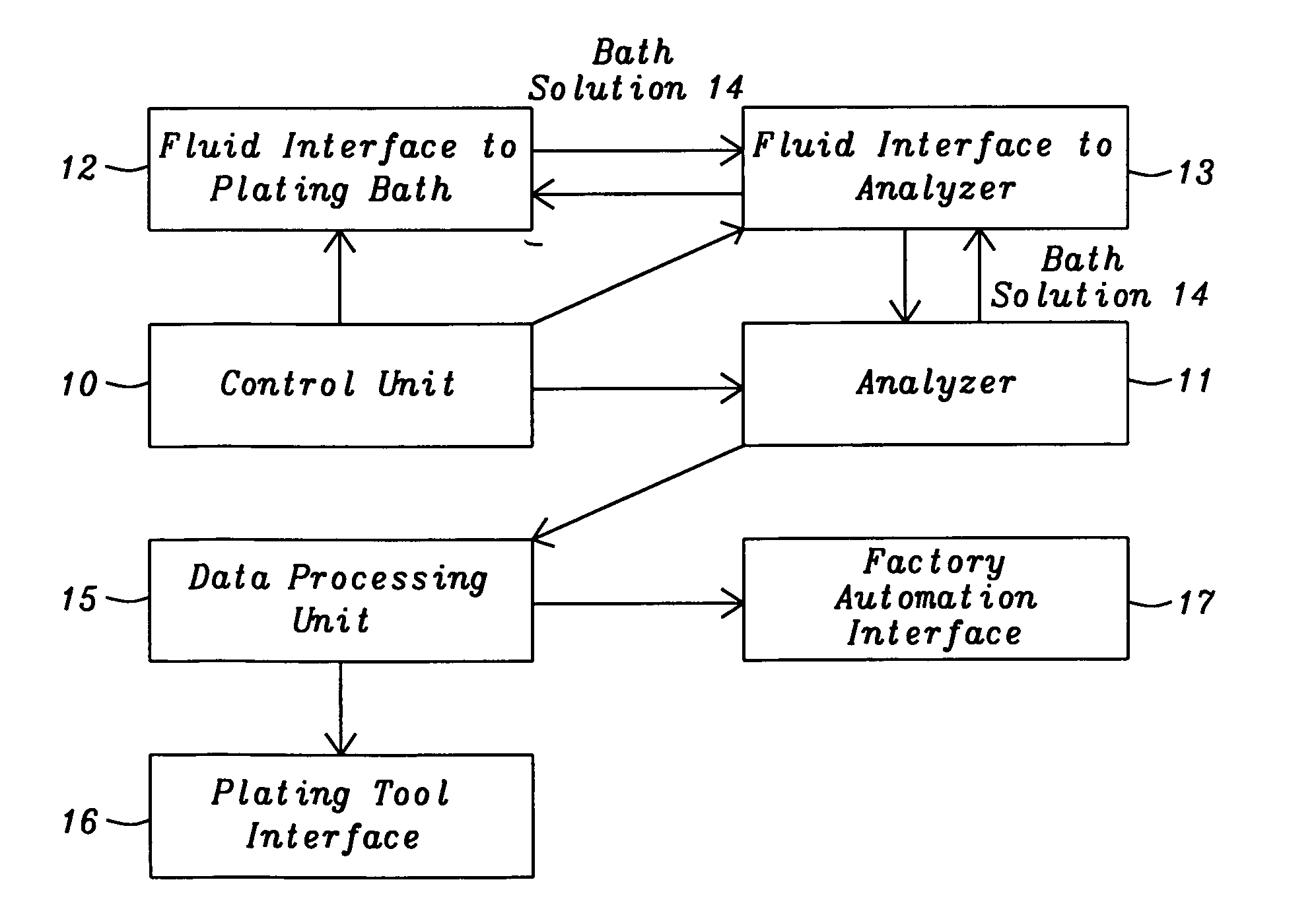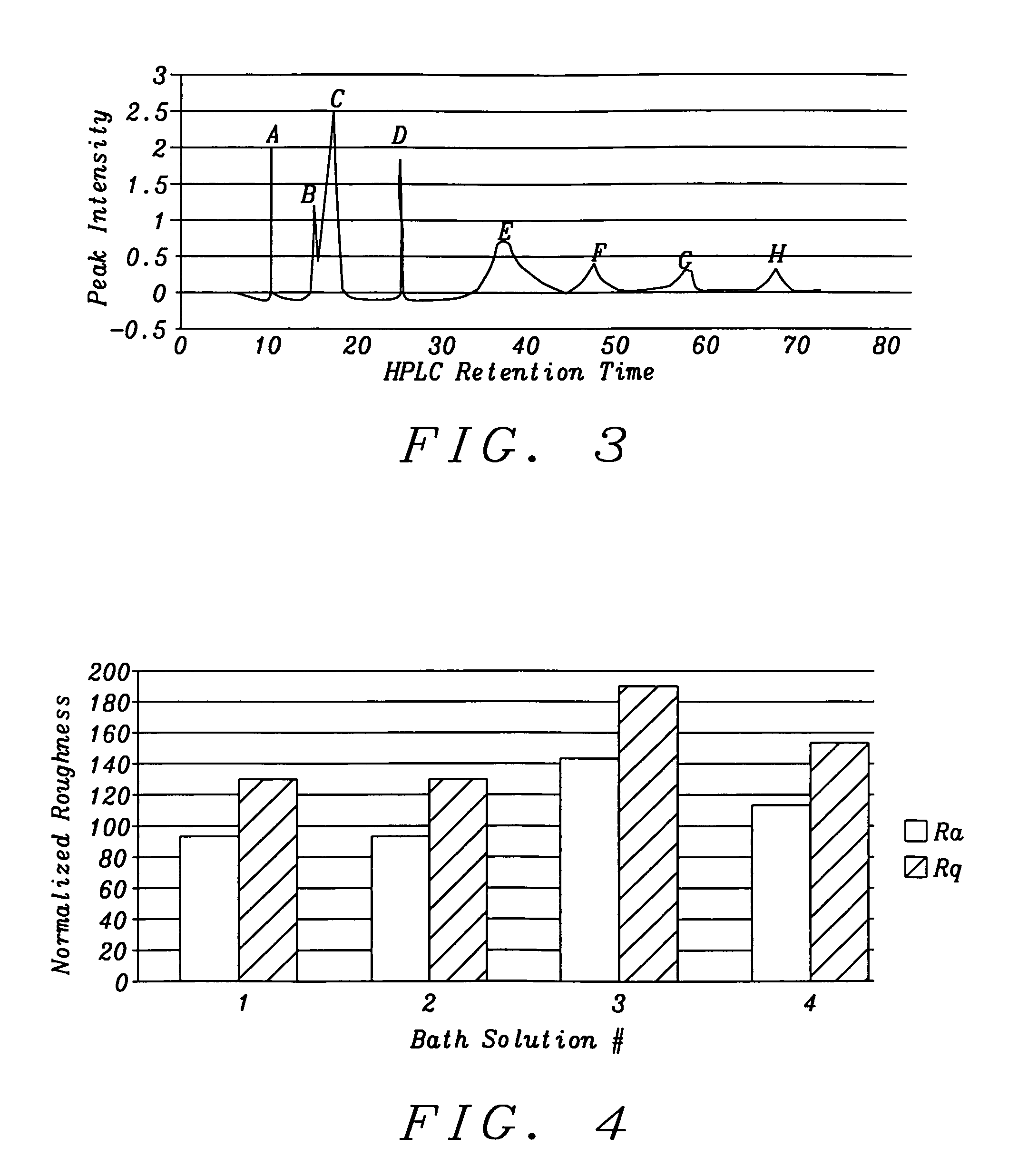Intelligent control system for electrochemical plating process
a technology of intelligent control system and electrochemical plating, which is applied in the direction of electrolysis process, electrolysis components, cells, etc., can solve the problems of reducing the electrical conductivity of smart dosing, affecting the properties of deposited metal films, and not perfectly compensating for additive consumption, so as to reduce dependence, reduce production cost, and material cost higher
- Summary
- Abstract
- Description
- Claims
- Application Information
AI Technical Summary
Benefits of technology
Problems solved by technology
Method used
Image
Examples
Embodiment Construction
[0041]The present invention is a method of controlling an electroplating operation that includes detecting, identifying, and quantifying degradation products by separation and analytical techniques, determining an output response related to at least one performance aspect, and calculating an equivalent amount of additive that would produce the same effect as the measured amount of degradation product. The terms electroplating, plating, and electrodeposition may be used interchangeably. Furthermore, an electroplating bath may also be referred to as an electroplating solution, electroplating cell, bath sample, or plating bath. Analytical instruments in the present invention relate to systems with or without one or more separation units and may be referred to as speciation analyzers. The present invention also encompasses an intelligent control scheme that includes various pieces of equipment and communication links between process components that enable the control system to use data ...
PUM
| Property | Measurement | Unit |
|---|---|---|
| concentration | aaaaa | aaaaa |
| concentration | aaaaa | aaaaa |
| HPLC | aaaaa | aaaaa |
Abstract
Description
Claims
Application Information
 Login to View More
Login to View More - R&D
- Intellectual Property
- Life Sciences
- Materials
- Tech Scout
- Unparalleled Data Quality
- Higher Quality Content
- 60% Fewer Hallucinations
Browse by: Latest US Patents, China's latest patents, Technical Efficacy Thesaurus, Application Domain, Technology Topic, Popular Technical Reports.
© 2025 PatSnap. All rights reserved.Legal|Privacy policy|Modern Slavery Act Transparency Statement|Sitemap|About US| Contact US: help@patsnap.com



